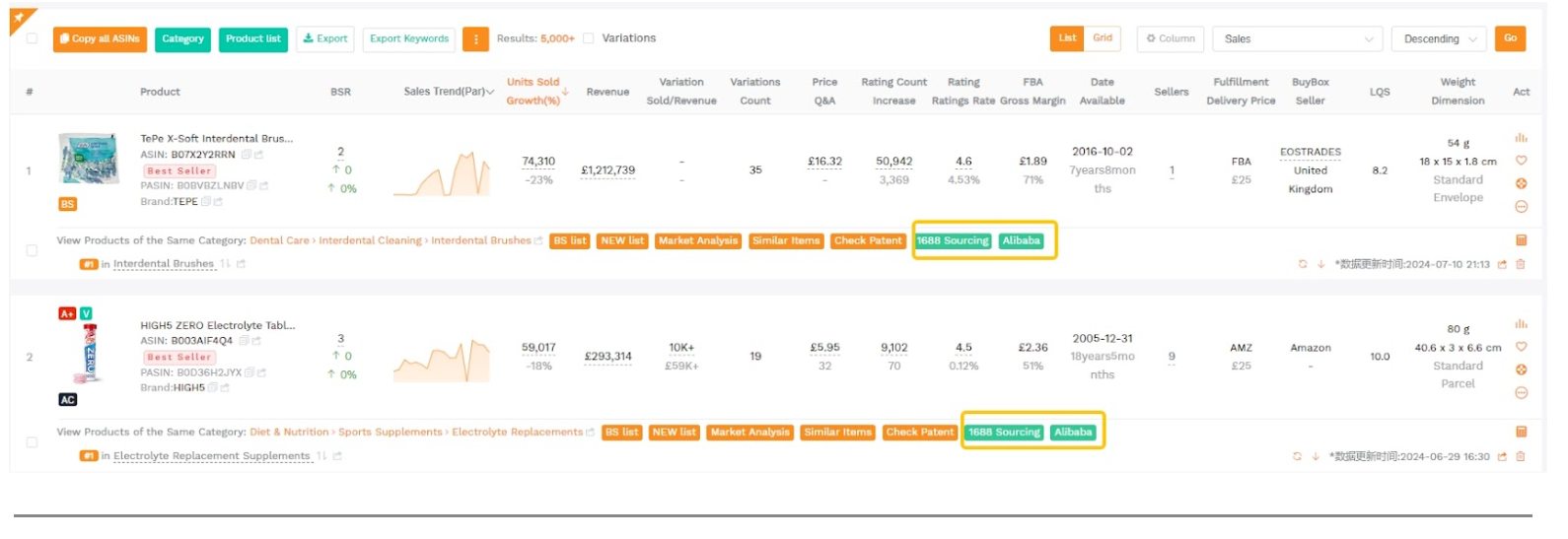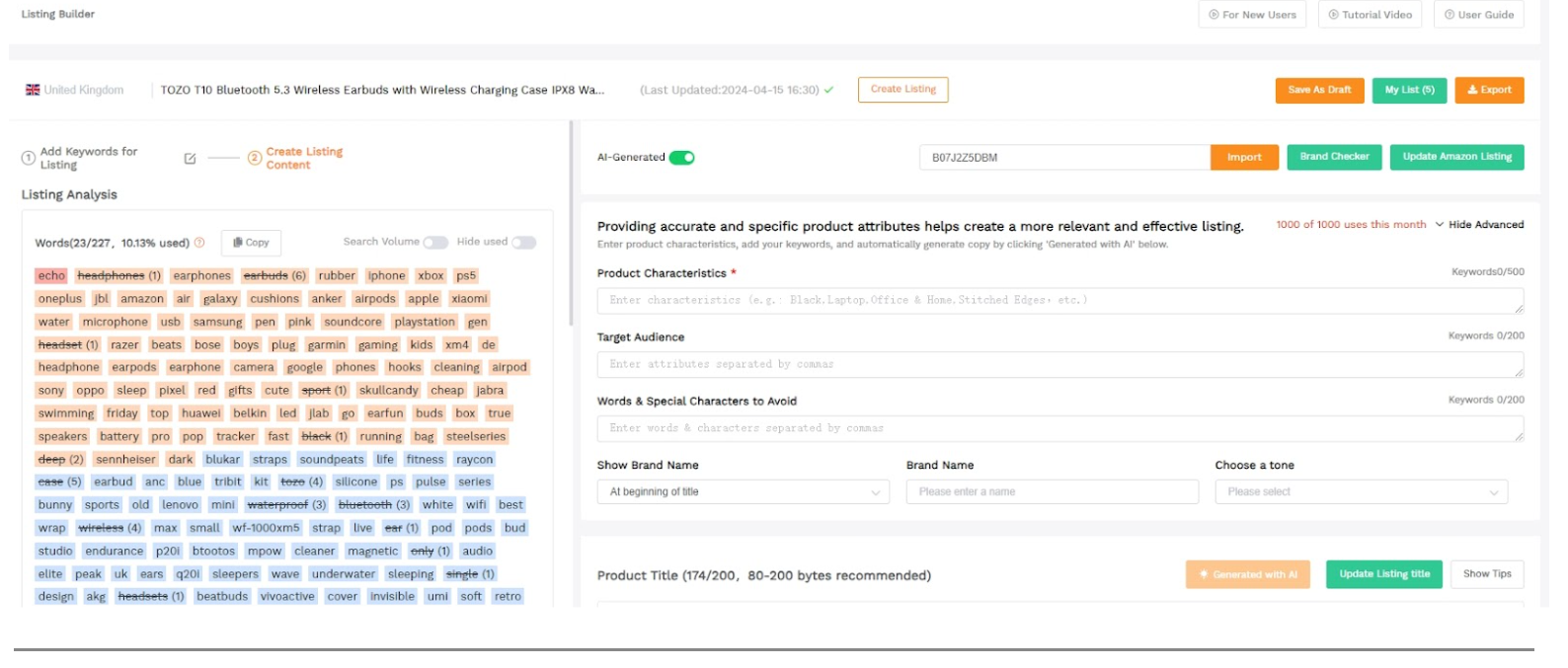Starting an Amazon business in 2024 offers a fantastic opportunity to tap into one of the world’s largest e-commerce platforms. With over 300 million active customers, Amazon provides entrepreneurs with a massive audience, advanced logistics infrastructure, and tools to grow their brand globally.
Whether you're looking to create a side hustle or build a full-time business, starting an Amazon business can be highly profitable. However, success requires a clear plan, the right strategies, and careful execution. In this guide, we’ll walk you through the process of launching an Amazon business in seven easy steps, from product research to scaling your brand.
Step 1: Choose a Profitable Product to Sell
The foundation of any successful Amazon business is choosing the right product. Not all products are created equal, and making the wrong choice can lead to poor sales, high competition, and wasted investments. Start by identifying a product niche that aligns with your interests while also showing strong market demand.
Here’s how to choose a profitable product:
- Research Market Demand: Use tools like SellerSprite, Jungle Scout, or Helium 10 to analyze product demand and competition. Look for products with consistent monthly sales and a search volume that indicates strong interest. High-demand, low-competition products are your sweet spot.
- Identify a Niche: Instead of entering broad, competitive categories, focus on niche markets where you can target a specific audience. For example, instead of selling generic fitness equipment, consider targeting niches like "home workout gear for seniors" or "travel-friendly exercise accessories."
- Check Profit Margins: Calculate your costs, including manufacturing, shipping, and Amazon fees. Ensure the product has a healthy profit margin of at least 30% after all expenses. Avoid products that require high initial investment or have low margins.
Once you’ve identified a potential product, validate your idea by checking customer reviews, assessing competitor performance, and analyzing the trend data. Use SellerSprite's Product Research tool to help you find goods!

Step 2: Source Your Products
Once you’ve chosen a product, the next step is to source it. You have two primary options: manufacturing your product or sourcing it from a supplier. Your choice will depend on your budget, goals, and product complexity.
Here’s how to source products effectively:
- Find a Reliable Supplier: Platforms like Alibaba, Global Sources, and IndiaMart are great for connecting with suppliers who can manufacture and supply your product. Evaluate suppliers based on their communication, reliability, and product quality. Request samples before committing to bulk orders.
- Negotiate Terms and Pricing: Pricing, minimum order quantities (MOQ), and shipping terms are negotiable. Building a relationship with your supplier and ordering larger quantities can help you secure better prices.
- Consider Private Labeling: Private labeling allows you to brand an existing product with your logo, packaging, and unique features. This adds value and differentiation, helping you stand out in the competitive Amazon marketplace.
Once you’ve finalized your supplier, place your first order. Ensure you account for production and shipping times so your products arrive well before your intended launch date. SellerSprite provides 1688 Source and Alibaba to help you find commodities with lower prices.

Step 3: Set Up Your Amazon Seller Account
Now that you have your products sourced, it’s time to set up your Amazon Seller account. There are two types of accounts you can choose from: Individual and Professional.
- Individual Account: This account is best if you’re selling fewer than 40 units per month. There’s no monthly fee, but Amazon charges $0.99 per sale along with referral and closing fees.
- Professional Account: This account is designed for serious sellers aiming to scale their business. It costs $39.99 per month, but you avoid the $0.99 per-sale fee. The Professional plan also gives you access to advanced selling tools, advertising options, and bulk listing features.
Here’s how to set up your seller account:
- Go to Amazon Seller Central and click “Sign Up.”
- Provide basic information, including your name, email address, and business details.
- Set up your payment information to receive payouts from Amazon.
- Choose your selling plan (Individual or Professional).
Once your account is set up, you can start listing products on the Amazon marketplace.
Step 4: Create High-Converting Product Listings
Your product listing is one of the most important aspects of your Amazon business. A well-optimized listing not only attracts more customers but also boosts your product’s visibility in Amazon search results.
Here’s how to create high-converting product listings:
- Craft a Compelling Title: Your product title should be clear, descriptive, and keyword-rich. Include essential information like brand name, product type, key features, and relevant keywords. For example, instead of “Yoga Mat,” use a title like “Eco-Friendly Non-Slip Yoga Mat for Beginners and Home Workouts.”
- Use High-Quality Images: Product images play a major role in driving conversions. Use high-resolution images that showcase your product from multiple angles. Include lifestyle photos to show the product in use and highlight key features with close-up shots.
- Optimize Bullet Points and Description: Use bullet points to list the main benefits and features of your product. Focus on what sets your product apart and how it solves a problem for your customers. Your description should expand on the benefits and include relevant keywords to improve SEO.
- Utilize Keywords: Use tools like SellerSprite or Helium 10 to find the best keywords for your product. Place these keywords strategically in your title, bullet points, and backend search terms.
A well-optimized listing improves your chances of ranking higher in search results, driving more traffic, and converting visitors into customers. Using SellerSprite's Listing Builder, you will quickly create a high-score listing with the help of AI.

Step 5: Launch and Promote Your Products
A successful product launch is crucial to gaining momentum and building sales velocity. The first few weeks of your product’s life on Amazon can determine its long-term success. Here’s how to launch and promote your products effectively:
- Run Amazon PPC Campaigns: Pay-per-click (PPC) advertising allows you to bid on relevant keywords and display your products in search results and product pages. Set up automatic and manual campaigns to test keywords and drive initial sales. Monitor your campaigns closely and optimize for profitability.
- Leverage Social Media and Email Marketing: Build anticipation for your product launch by promoting it on your social media channels and email list. You can offer early-bird discounts, giveaways, or influencer partnerships to drive traffic and sales.
- Encourage Reviews and Ratings: Positive reviews are critical for building trust and boosting your product’s visibility. Follow up with customers via Amazon’s Request a Review feature to encourage honest feedback. Ensure you provide excellent customer service to keep your ratings high.
Your launch strategy should focus on driving as many sales as possible in the early days to improve your product’s ranking and attract organic traffic.
Step 6: Manage Your Inventory and Optimize Operations
Once your products are live and selling, managing inventory and operations efficiently is key to sustaining growth. Inventory management ensures you avoid stockouts, which can hurt your rankings, or excess stock, which increases storage fees.
Here’s how to manage inventory effectively:
- Use Inventory Management Tools: Tools like RestockPro or SoStocked help you forecast demand, track stock levels, and plan restocking based on sales trends. Automated alerts ensure you never run out of inventory or over-order.
- Monitor Amazon Fees and Costs: Keep an eye on your FBA fees, storage costs, and advertising spend. Regularly review your profit margins to ensure your business remains profitable.
- Plan for Seasonality: Depending on your product, you may experience seasonal fluctuations in demand. Plan your inventory and marketing campaigns accordingly to maximize sales during peak seasons and manage cash flow during slower periods.
Efficient inventory management is crucial to maintaining profitability and ensuring your business can scale smoothly.
Step 7: Scale Your Amazon Business
Once you’ve established a profitable product line, the next step is scaling your business. Scaling involves expanding your product range, optimizing operations, and increasing your brand’s visibility.
Here are some ways to scale your Amazon business:
- Expand Your Product Line: Introduce complementary products that align with your existing brand. Use customer feedback, sales data, and market trends to identify opportunities for new products.
- Optimize Your Listings and Advertising: Continuously optimize your product listings and PPC campaigns to maximize conversions and profitability. A/B testing different headlines, images, and keywords can lead to incremental improvements that boost sales.
- Build a Brand Beyond Amazon: As your brand grows, consider expanding to other sales channels like your own website, social media, and retail stores. Building an audience outside Amazon reduces dependency on the platform and allows you to control your brand experience.
- Leverage Amazon Brand Registry: If you’ve built a brand, consider enrolling in Amazon Brand Registry. This gives you access to advanced tools like A+ Content, Sponsored Brands ads, and brand protection features that enhance your presence on Amazon.
Scaling your business requires strategic planning, data analysis, and a willingness to invest in growth. With the right approach, your Amazon business can generate substantial revenue and become a dominant player in your niche.
Conclusion
Starting an Amazon business in 2024 is an exciting venture with immense potential. By following these seven steps, you can set yourself up for success, from choosing the right product to scaling your brand. While the journey requires hard work, strategic decision-making, and continuous optimization, the rewards can be well worth the effort.
Remember, success on Amazon doesn’t happen overnight. Take the time to research, plan, and execute each step carefully. With dedication and a commitment to learning, you’ll be well on your way to building a profitable Amazon business.